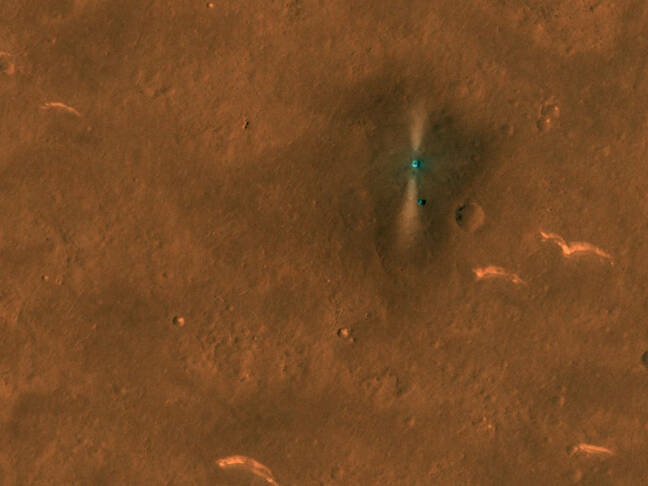This article is more than 1 year old
Perseverance Mars rover sets off on its first mission, to boldly drill and return samples as no rover has drilled before
All systems check out, it's time to science the s**t out of Mars
NASA has finished the Perseverance Mars rover's post-landing shakedown and the vehicle has therefore embarked on its first sample collection mission, the space agency confirmed on Wednesday.
The six-wheeled nuclear-powered vehicle has been shuffling about the Jezero crater testing its instruments since it landed in February. Perseverance tested its hardware and shepherded the world’s first interplanetary helicopter, Ingenuity, sending it zipping through the Martian atmosphere.
Now it's on the move for the main game: exploring Mars.
“We are putting the rover’s commissioning phase as well as the landing site in our rearview mirror and hitting the road,” said Jennifer Trosper, the Perseverance Project Manager at NASA’s Jet Propulsion Laboratory.
“Over the next several months, Perseverance will be exploring a 1.5-square-mile [4-square-kilometre] patch of crater floor. It is from this location that the first samples from another planet will be collected for return to Earth by a future mission.”
The 1025kg (2,260lb) geologist-on-wheels has been sent to explore two geologic features in the crater that scientists have singled out: “The Crater Floor Fractured Rough,” in pockmarked bedrock of Jezero, and “Séítah” (a word that means “amidst the sand” in the Navajo language), an area that contains layers of rock, sand dunes, and ridges.
“Starting with the Crater Floor Fractured Rough and Séítah geologic units allows us to start our exploration of Jezero at the very beginning,” said Kevin Hand, an astrobiologist also working at JPL, co-leading Perseverance's first science campaign.
“This area was under at least 100 metres [328 feet] of water 3.8 billion years ago. We don’t know what stories the rocks and layered outcrops will tell us, but we’re excited to get started.”
- Roam if you want to: China’s Zhurong rover begins trundling on Mars
- NASA doubles down on Venus missions, asking what made the planet uninhabitable
- NASA to return to the Moon by 2024. One problem with that, says watchdog: All of it
- Pics or it didn't happen: First images from China's Mars rover suggest nothing has gone Zhurong just yet
Using cameras, spectrometers, and a laser, Perseverance will find four locations across these two features that are the most geologically interesting. When it finds the perfect spot, the rover will drill into the Martian matter and bottle up a sample of the rock’s core.
Depending on how interesting these units are, Perseverance will extract up to eight rock or dust samples. It has a total of 43 sampling tubes to scoop the finest Martian dirt. After it inspects the locations and bags up the goodies, it will have traveled somewhere between 1.6 to 3.1 miles (2.5 to 5 kilometres) and return to its landing site.
After some systems checks, Perseverance will get ready for the second stage, when Mission Control will send it to Jezero’s delta region — an area shaped like a fan that scientists reckon will be rich in ancient carbonates and minerals. Samples collected here may contain fossilised microbes or rocky deposits created from previous biological processes leftover after the liquid in the crater dried out.
No China crisis
Meanwhile, the US has released the first images of China's first Martian lander and its solar-powered rover
On June 6 the High Resolution Imaging Science Experiment (HiRISE) camera onboard NASA’s Mars Reconnaissance Orbiter snapped China’s rover Zhurong and the Tianwen-1 lander on Mars’s southern Utopia Planitia. The orbiter also snapped pictures of the lander's parachute and heat shield.
In the upper right, the lander can be seen between the two blast patterns from its landing rockets from when the vehicle touched down. The Zhurong rover is a little to the south and is now roaming around the large impact basin, where it'll be trying to find liquid water. ®

